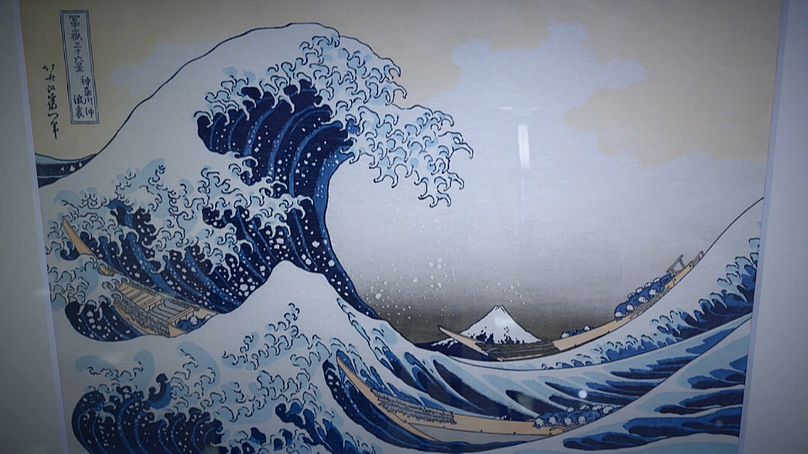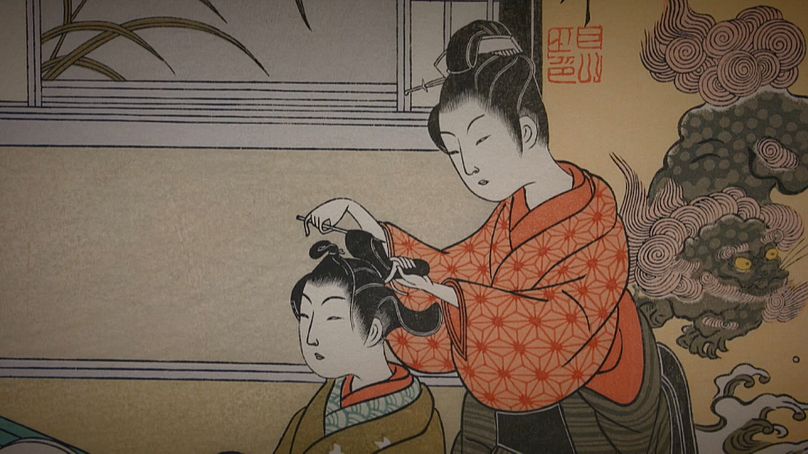Euronews reporter Naomi Lloyd discovers that Tokyo is a city of contrasts - where rich traditions sit alongside futuristic innovation.
We begin at the Imperial Palace – which this year welcomed a fresh era with the enthronement of Emperor Naruhito.
We move to the Adachi Institute which houses one of Tokyo’s most important collections of Ukiyo-e.
Ukiyo-e are beautifully crafted Japanese paintings and woodblock prints with delicate lines and vivid colours. The art form flourished from the 17th century through to the 19th century during the Edo period.
Euronews reporter Naomi Lloyd spoke to the director of the Adachi Foundation, Meguri Nakayama to find out more.
“Ukiyo-e was part of popular culture and enjoyed by the general public during the Edo period," he says. "The prints were produced by publishing houses and they depict the fashionable beautiful women of the time as well as nature,” explains Meguri Nakayama.
Japan -then and now
How is Tokyo’s art scene navigating its past and present, and where does it fit into the high-speed algorithmic age we live in?
“I think that today in a digital era, the fact that what we do is analogue - and each painting is done one-by-one, by hand, that’s what’s attractive,” answers Meguri Nakayama.
Many of the scenes illustrated in Ukioy-e can still be found in the Tokyo today. Naomi Lloyd visited the Shin-ohashi bridge, as depicted in the great Ukiyo-e master Utagawa Hiroshige's famous painting.
“In Utagawa Hiroshige’s famous painting – people crossing Shin-ohashi bridge are caught in a sudden shower. This is exactly where they would have walked along - although the bridge is no longer wooden - and we're definitely luckier with the weather today.”
Ukiyo-e's influence on impressionism
Van Gogh was so enamoured with the work of Utagawa Hiroshige, he reproduced his own copy in oil paint.
At the Adachi institute, as well as replicating older, well-known works, the institute collaborates with contemporary artists to create new original pieces.
Ukiyo-e: still inspiring newer generations
Artisans are trained in the same age-old techniques, keeping the tradition alive for future generations.
Naomi Lloyd spoke to artisan Chikura Kishi about how he first became interested in the old art form of Ukiyo-e.
“I was a student at the university of fine arts and by chance I had the opportunity to see the technique of Ukiyo-e," he says. "I was fascinated by the high level techniques that had taken generations to achieve and so that was how I got started.”
Akira Yamaguchi is one of a new generation of Tokyo artists who uses Ukiyo-e techniques to create a new style of art. He spent most of his life living in the Chuo neighbourhood and looks there for inspiration.
“You can see that this neighbourhood is different from other areas. The mix of modernity and the old buildings interwoven together here - that’s what inspires the styles in my paintings,” he tells Naomi.
In his cityscapes - old-fashioned Japanese buildings and characters coexist alongside high-rise modern skyscrapers, with elements of fantasy and science fiction woven in. It doesn't stop there as Yamaguchi is already an accomplished Manga artist in his own right.
Tokyo artists are at the forefront of the manga scene and the locations featured in their drawings attract visitors from around the world. Manga expert, from Ginza Tsutaya Books, Nana Midoro, sees both Manga and Ukiyo-e as integral to Japanese culture.
“Manga is a big part of Japanese culture and art. There are similarities between Manga and Ukiyo-e - Manga artists use the same perspective as in a work of Ukiyo-e to draw the best angles possible to show the action in each frame", she says.
Tokyo is a city which offers a wealth of inspiration for a new generation of artists.














